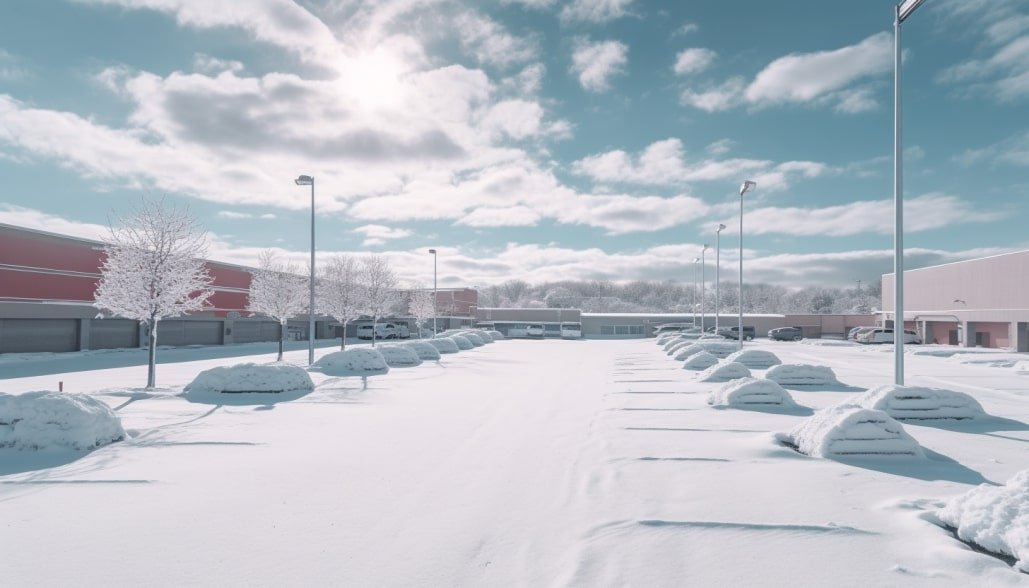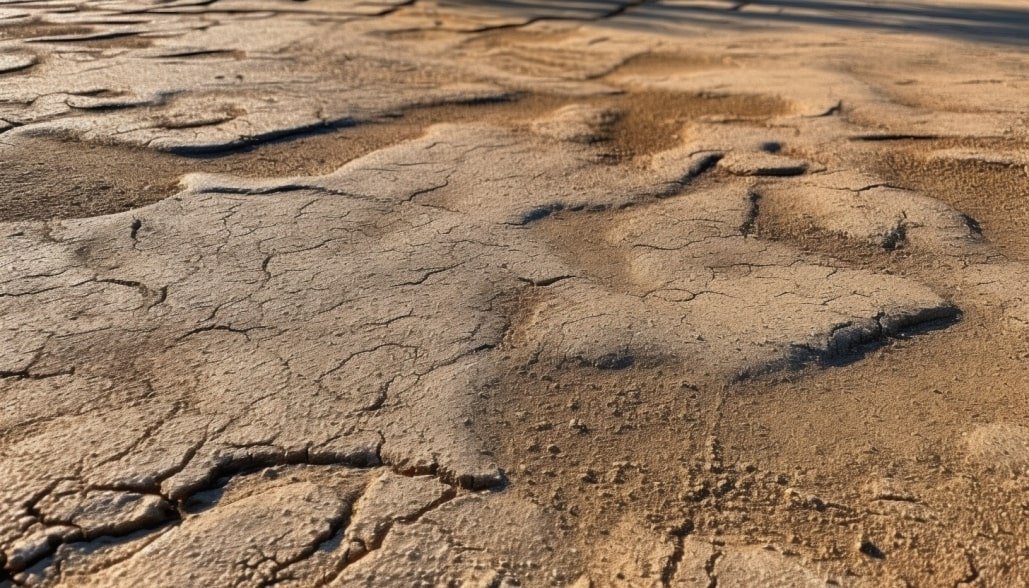Parking lots, an integral part of modern infrastructure, often go unnoticed – until they’re poorly maintained. In Canada, where a clean, well-tended parking lot can make all the difference to businesses and public spaces, understanding the essentials of effective cleaning is paramount. For facility managers and cleaning professionals, knowing the right tools and how to use them efficiently can save both time and resources. But it’s not just about keeping the parking lot clean; it’s about extending its lifespan, improving safety, and enhancing its aesthetic appeal. This guide will help you unravel the mystery of the seven must-have tools for top-notch parking lot cleaning, tailored to Canadian climate and local resources.
Table of Contents
The Need for Specialized Tools in Parking Lot Cleaning
Maintaining a parking lot isn’t as simple as sweeping and picking up litter. The process involves a wide range of tasks, including removing stubborn stains, getting rid of accumulated snow, and dealing with leaves and debris, especially in fall. Thus, it calls for specialized tools designed to handle such tasks.
One can’t emphasize enough the difference that the right tools can make in this context. They play a crucial role in improving productivity and efficiency in parking lot cleaning. With the right tools at hand, you can accomplish more in less time and with less manpower, which translates to significant cost savings. For example, power washers can clean vast areas quickly and efficiently, thereby saving both time and labor.
Unfortunately, not everyone realizes the importance of using the right tools. Without them, you might find yourself investing more time and effort than necessary, which could lead to higher operating costs. Moreover, using the wrong tools can even cause damage to the parking lot surface, leading to costly repairs. Therefore, understanding and investing in the seven must-have tools we’ll discuss further is a worthy pursuit.
The 7 Must-Have Tools for Effective Parking Lot Cleaning
High-Pressure Power Washer
High-pressure power washers are a staple in parking lot cleaning. They utilize a high-pressure water spray to remove loose paint, mold, grime, dust, mud, and dirt from surfaces and objects. This makes them incredibly efficient at cleaning large concrete areas quickly.
Power washers come in a variety of sizes, power ratings, and types—electric, gas-powered, hot water, cold water—to cater to different needs. For parking lots, commercial-grade power washers are often recommended, as they provide the necessary power to remove stubborn stains and grime.
When using a power washer, it’s essential to remember safety precautions. Always wear protective clothing and eye protection, and ensure the area is clear of bystanders before you start. Remember, the high-pressure water spray can cause injuries or damage if not handled properly.
Key Takeaway: A high-pressure power washer is a powerful tool that can help you clean large areas quickly and efficiently. Always remember to use it safely and responsibly.
Street Sweeper
The street sweeper is another essential tool in parking lot cleaning. It helps keep the parking lot clean by removing loose debris, dirt, and dust.
Street sweepers come in a variety of styles, from walk-behind models to ride-on versions and even large truck-mounted units. These machines are designed to handle everything from small parking lots to large commercial spaces.
Choosing the right street sweeper depends on the size of your parking lot and the amount of debris it typically collects. For example, a small parking lot might only require a walk-behind sweeper, while a large commercial space would benefit from a ride-on or truck-mounted model. There are three different types of street sweepers: mechanical sweepers, vacuum sweepers, and regenerative air sweepers.
| Type of Street Sweeper | Function |
| Mechanical Broom | Uses a rotating cylindrical brush to move debris onto a conveyor belt and into a hopper. Ideal for picking up heavier debris. |
| Regenerative Air Sweeper | Uses air jets in hydraulic systems to loosen dirt and draw it toward the center of the truck, often in a spiraling motion to keep the debris from flying away before it gets sucked into the receptacle. Ideal for removing fine dust and debris. |
| Vacuum Street Sweeper | Operates similarly to a large household vacuum, with a single suction outlet on one of the sides of the sweeping head. The air is continuously exhausted out the back of the sweeper. Ideal for removing light debris and dust. |
Street sweepers are not just about aesthetics; they also play a role in safety. By removing debris and dirt, they reduce the risk of slips and falls, making the parking lot safer for pedestrians.
Key Takeaway: Street sweepers play a vital role in maintaining cleanliness and safety in parking lots. Choosing the right one depends on the size of your space and the amount of debris it typically accumulates.
Vacuum Truck
Sometimes, street sweepers might not be enough, especially when it comes to dealing with large debris and heavy dirt. This is where vacuum trucks come in handy.
A vacuum truck, also known as a vacuum tanker or sucker truck, is a tank truck that has a pump and a tank, designed to pneumatically suck liquids, sludges, slurries, or the like from a location (often underground) into the tank of the truck. In the context of parking lot cleaning, these trucks are used to remove large debris, leaves, and other heavy dirt that a regular sweeper can’t handle.
In the context of parking lot cleaning, these trucks are used to remove large debris, leaves, and other heavy dirt that a regular sweeper can’t handle. There are several types of parking lot sweepers available in the market that can be used for cleaning parking lots. These include powerful and maneuverable parking lot sweepers from Haaker, used vacuum sweepers from Buysweepers.com, mini sweepers from Madvac, new parking lot sweeper trucks and trailer-mounted litter vacuums from Carolina Industrial Equipment, and parking lot sweeper trucks from Stewart-Amos.
Using a vacuum truck can significantly speed up the cleaning process, especially in larger parking lots. It can also help improve the longevity of the parking lot by removing debris that can cause damage over time.
Key Takeaway: Vacuum trucks are a valuable addition to your parking lot cleaning arsenal, particularly for dealing with large debris and heavy dirt.
Scrubbing Machines
Scrubbing machines, also known as floor scrubbers, are used to clean smaller, hard-to-reach areas that a street sweeper might miss. They are also ideal for dealing with stubborn stains that require a bit of scrubbing to remove.
These machines come in different sizes and types, including walk-behind and ride-on models. Each model offers distinct advantages, with walk-behind models being more suitable for smaller areas, while ride-on models can cover larger areas more efficiently.
| Type of Scrubbing Machine | Function |
| Mechanical Sweepers | These sweepers have brooms that push debris towards the middle of the sweeper, then there is some sort of conveyor system that moves the debris into a hopper. Ideal for picking up heavier debris. |
| Vacuum Sweepers | These sweepers operate similarly to a large household vacuum. Typically, there is a single suction outlet on one of the sides of the sweeping head, and the air is continuously exhausted out the back of the sweeper. Ideal for removing light debris and dust. |
| Regenerative Air Sweepers | These sweepers use air jets in hydraulic systems to loosen dirt and draw it toward the center of the truck, often in a spiraling motion to keep the debris from flying away before it gets sucked into the receptacle. Ideal for removing fine dust and debris. |
| Pressure Washers | These machines quickly strip unsightly dirt and debris from a number of surfaces using high-pressure water. Ideal for cleaning outdoor surfaces such as decks, fences, and driveways. |
The scrubbing machine uses a system of rotating brushes combined with a cleaning solution to scrub off dirt and stains. After scrubbing, the machine vacuums up the dirty water, leaving the surface clean and dry.
Key Takeaway: Scrubbing machines can help you clean hard-to-reach areas and remove stubborn stains effectively, making them an essential part of your cleaning toolset.
Blowers
Blowers, particularly leaf blowers, are another handy tool for parking lot cleaning. These machines use the power of air to blow leaves, light debris, and dust from the parking lot.
Blowers can come in handy, especially in the fall when leaves start to pile up. Here are the different types of leaf blowers:
- Handheld Leaf Blowers: These are the most popular option for home use. They are lightweight and easy to maneuver, making them ideal for small parking lots or areas with limited space.
- Backpack Leaf Blowers: These leaf blowers keep the blower tube in your hand while you carry the motor in a shoulder harness. They are more powerful than handheld leaf blowers and can be used for larger parking lots or areas with more leaves and debris.
- Walk Behind Leaf Blowers: These leaf blowers are designed to be pushed like a lawnmower. They are the most powerful type of leaf blower and can be used for large parking lots or commercial areas.
- Gas Leaf Blowers: These leaf blowers are powered by gas and are typically more powerful than electric leaf blowers. They come in handheld, backpack, and walk-behind styles.
- Corded Electric Leaf Blowers: These leaf blowers are powered by electricity and need to be plugged into an outlet. They are typically less powerful than gas-powered leaf blowers but are quieter and require less maintenance.
- Cordless Leaf Blowers: These leaf blowers are battery-powered and do not require a cord or gas. They are typically less powerful than gas-powered leaf blowers but are more convenient and easier to use.
Key Takeaway: Leaf blowers can help you keep your parking lot clean, especially during the fall season. Choose the type that best suits your needs based on the size of your parking lot and the amount of debris you have to manage.
Snow Removal Equipment
Given the Canadian climate, snow removal equipment is a must-have for parking lot maintenance. These tools are designed to remove snow and ice to keep your parking lot accessible and safe during the winter months.
Snow removal equipment can range from simple shovels and ice scrapers to more advanced machinery like snow blowers and plows. For larger parking lots, you might even consider using a snow removal truck or tractor with a plow attachment.
When choosing snow removal equipment, consider the average snowfall in your area and the size of your parking lot. Also, remember to take into account local regulations regarding snow disposal.
Key Takeaway: Snow removal equipment is vital for maintaining a safe and accessible parking lot during the winter months. The type of equipment you need will depend on the size of your parking lot and local snowfall patterns.
Trash Pickers and Bins
Last but certainly not least, simple tools like trash pickers and bins are indispensable for maintaining a clean parking lot. They are used for picking up and disposing of litter, which can negatively impact the appearance of your parking lot.
Trash pickers, also known as litter pickers, are tools with a handle and a claw at the end for picking up trash without needing to bend down. They are particularly useful for cleaning large areas quickly.
Bins, on the other hand, are used for storing the picked-up trash. Choosing the right bins for your parking lot can also help encourage visitors to dispose of their trash properly.
Key Takeaway: Even simple tools like trash pickers and bins play a crucial role in keeping your parking lot clean and litter-free. Consider placing bins strategically around your parking lot to encourage proper waste disposal.
How to Use These Tools Effectively: Best Practices
Having the right tools for parking lot cleaning is only half the battle won. Knowing how to use these tools effectively, maintain them properly, and ensure safe operation are other vital aspects that can make a difference. It’s also worth noting that each tool has specific operating procedures and safety measures to follow, making it important to read and understand the instruction manuals.
Operating Procedures for Each Tool
Proper operation of these tools is paramount to maximizing their efficiency and lifespan. For instance, when using a power washer, ensure you’re using the correct nozzle and pressure settings. For a street sweeper, routine checks and adjustments are necessary to keep it working optimally. Vacuum trucks require careful handling due to their complex operation. Scrubbing machines and blowers have their own set of procedures that need to be followed, which mostly involve proper usage and regular cleaning. Snow removal equipment and trash pickers are generally straightforward but still require appropriate usage to prevent damage.
Key Takeaway: Each tool has its unique operating procedures. Following them not only ensures effective performance but also extends the lifespan of the tool.
Maintenance Tips and Tricks
Regular maintenance is essential to keep these tools running smoothly. This can involve routine checks, cleaning after usage, and periodic servicing. Power washers, for instance, need their pumps to be winterized before storage to prevent damage. Street sweepers and vacuum trucks require regular inspection and replacement of worn-out parts. Scrubbing machines, blowers, and snow removal equipment also have their own set of maintenance practices which typically involve regular cleaning, lubrication, and part replacement.
Key Takeaway: Regular maintenance is essential to keep your tools in good working condition and prolong their life.
Safety Measures to Consider
Safety should always be a priority when operating these tools. High-pressure power washers can cause injuries if not handled properly. Street sweepers, vacuum trucks, and scrubbing machines have their safety hazards and precautions to be taken. Blow-off from blowers can harm bystanders if not careful, and snow removal equipment can also pose risks due to their heavy nature.
Key Takeaway: Always prioritize safety when operating these tools. Understand the safety measures for each tool and adhere to them strictly.
Where to Buy These Tools: Reliable Canadian Vendors
After understanding the tools and how to use them effectively, the next step is to find reliable vendors to purchase them from. Whether you choose local markets or online shopping, it’s important to consider the pros and cons.
Local Markets Vs. Online Shopping: Pros and Cons
Local markets offer the advantage of physically examining the product before purchase, allowing for a better judgement of quality. However, they may have limited choices compared to online shopping, which provides a wide range of options from different brands across the globe. However, with online shopping, there’s always a risk of receiving a product that doesn’t meet expectations. This is why it’s crucial to buy from reputable online vendors.
Key Takeaway: Both local markets and online shopping have their pros and cons. Choose the option that best suits your needs, and ensure you’re buying from reputable vendors.
Vendor Checklist: What to Look for
When choosing a vendor, consider factors like their reputation, warranty offerings, after-sales service, and return policy. It’s also beneficial to check customer reviews and ratings to get an idea of the product quality and customer service.
Key Takeaway: Having a checklist when choosing a vendor can help ensure you get quality products and excellent customer service.
Brushing Up Your Cleaning Game: Tips and Tricks for Canadian Parking Lot Maintenance
Canadian weather conditions require special attention when maintaining parking lots. Below, we provide seasonal tips, green cleaning practices, and solutions for common Canadian parking lot problems.
Seasonal Tips (Taking Canadian Weather into Account)
Winter in Canada can be particularly harsh. Snow and ice buildup not only makes parking lots inaccessible but also increases the risk of accidents. Regular snow removal is essential during these months. Spring, on the other hand, is typically wet and may lead to the proliferation of moss and algae, making power washers particularly handy. Fall requires frequent use of leaf blowers to keep the lot clean from falling leaves.
Key Takeaway: Canadian seasons each have unique challenges for parking lot maintenance. Recognizing these challenges can help you better prepare and manage your cleaning schedule.
Green Cleaning Practices
It’s essential to adopt green cleaning practices, not only for the environment but also to comply with Canadian environmental regulations. Here are some ways to make your cleaning process more sustainable:
- Use eco-friendly cleaning solutions that are biodegradable and non-toxic.
- Reduce water waste by using low-flow faucets, toilets, and other water-saving devices.
- Properly dispose of waste by separating recyclables, compostables, and hazardous materials.
- Use microfiber cloths and mops that can be washed and reused instead of disposable paper products.
- Choose cleaning equipment that is energy-efficient and has a low environmental impact.
- Train staff on green cleaning practices to ensure they are following sustainable procedures.
Key Takeaway: Green cleaning practices can help reduce your environmental footprint and ensure you comply with Canadian environmental regulations.
Dealing with Common Canadian Parking Lot Problems
From salt damage due to winter road treatments to oil stains and litter, Canadian parking lots face many common issues. Knowing how to deal with these problems using the right tools and techniques can save you time and resources.
Key Takeaway: Understanding common Canadian parking lot problems and how to solve them can help keep your parking lot in the best condition all year round.
Let’s Recap: Empowering Your Parking Lot Maintenance Journey
By now, you should have a good understanding of the tools you need for effective parking lot cleaning in Canada, how to use and maintain them, where to buy them, and how to adapt your cleaning practices to Canadian conditions. With this knowledge, you can ensure that your parking lot stays clean and inviting throughout the year.
Frequently Asked Questions
Are these tools applicable for any size of parking lot?
Yes, but the size and model of the tool may vary depending on the size of the parking lot.
How can I ensure the longevity of these tools?
Regular maintenance and following the recommended operating procedures can help ensure the longevity of these tools.
What are the specific considerations for parking lot cleaning in different Canadian seasons?
Canadian winters require frequent snow removal. Spring can be wet, leading to moss and algae growth, while fall is characterized by falling leaves.
Are there eco-friendly alternatives to these tools?
Yes, many manufacturers now offer eco-friendly alternatives. It’s also important to use eco-friendly cleaning solutions where possible.
Sources
- Miranda, Ciro. “Pressure Washing Large Parking Lots – Green Earth Power Wash.” Green Earth Power Wash, 24 Sept. 2021, greenearthpowerwash.com/commercial-power-washing-services/pressure-washing-large-parking-lots/. Accessed 19 May 2023.
- “HowStuffWorks.” HowStuffWorks, 31 Mar. 2009, auto.howstuffworks.com/street-sweeper1.htm. Accessed 19 May 2023.
- Aspen, Jacob. “Different Types of Leaf Blowers: Which Is the Best Type for Your Gardening Needs?” Tool Venture, Tool Venture, 13 Oct. 2022, www.toolventure.co.uk/types-of-leaf-blowers/. Accessed 19 May 2023.
- “Cleaning and Sanitation Program – Canadian Food Inspection Agency.” Canada.ca, 2014, inspection.canada.ca/preventive-controls/cleaning-and-sanitation-program/eng/1511374381399/1528206247934. Accessed 19 May 2023.











